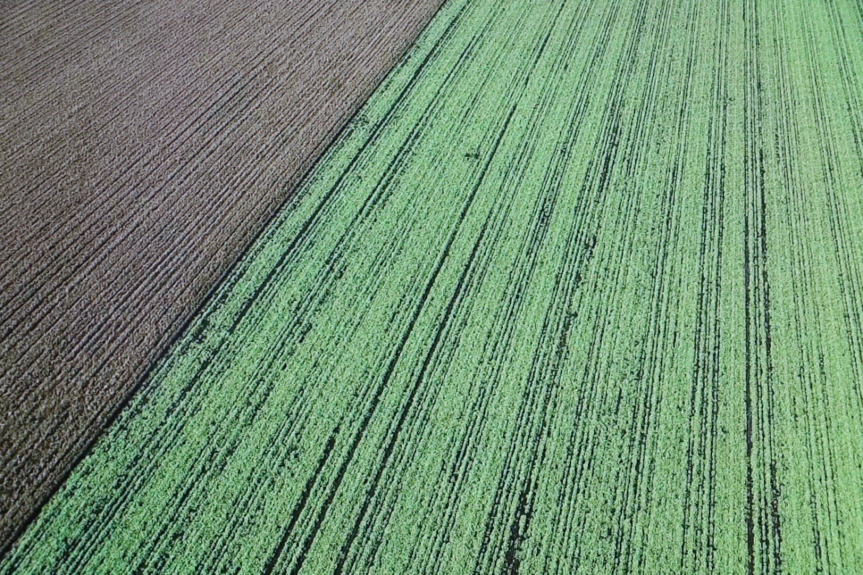Welcome to the Holland Marsh Growers' Association
Use of Cover Crops by HMGA Growers
Cover crops come in many varieties and growers choose varieties based on a number of cropping factors and length of time the cover is required.
Varieties can include grasses, legumes, broadleaf varieties and mixtures. In the vegetable growing area of the Holland Marsh and vicinity, growers have relied primarily on barley, sorghum, red clover and oil seed radish to protect and enhance their soil. The use of these varieties depends on individual needs and many growers will use more than one variety at different times of year.
In some instances, growers are seeking ground cover of a semi-permanent nature to hold land until decisions are made on further use for vegetable production. In these cases, a legume such as red clover or alfalfa is used.

Interseeding
Soil Cover
With early harvested green crops and/or onion crops, the soil is exposed to wind storms and a grower can experience serious wind erosion impacts. Cover crops offer the ability to hold soil in place. In these situations, growers prefer a crop that will die of winter kill that allows for early spring seeding or a grass that is left to grow until early spring and killed prior to seeding. In either case, the cover crop extends the period where there are living roots in the soil interacting with nutrients and soil microorganisms. The longer living roots are in the ground, the more fungal activity. When there is no crop growth, the fungal activity retracts and affects soil health and fertility.


Field Retirement
Some growers will retire fields for a year to remediate soil health. In some cases, growers will plant winter wheat or soybeans followed by a cover crop to protect the soil to the following year. In this scenario, the grower receives income from the land until it is replanted into a vegetable crop. In some cases, growers will seek to add organic matter during the year and revert to planting a sorghum mix in early spring. Sorghum is then chopped in late June before it goes to seed and the field is replanted with oil seed radish.
